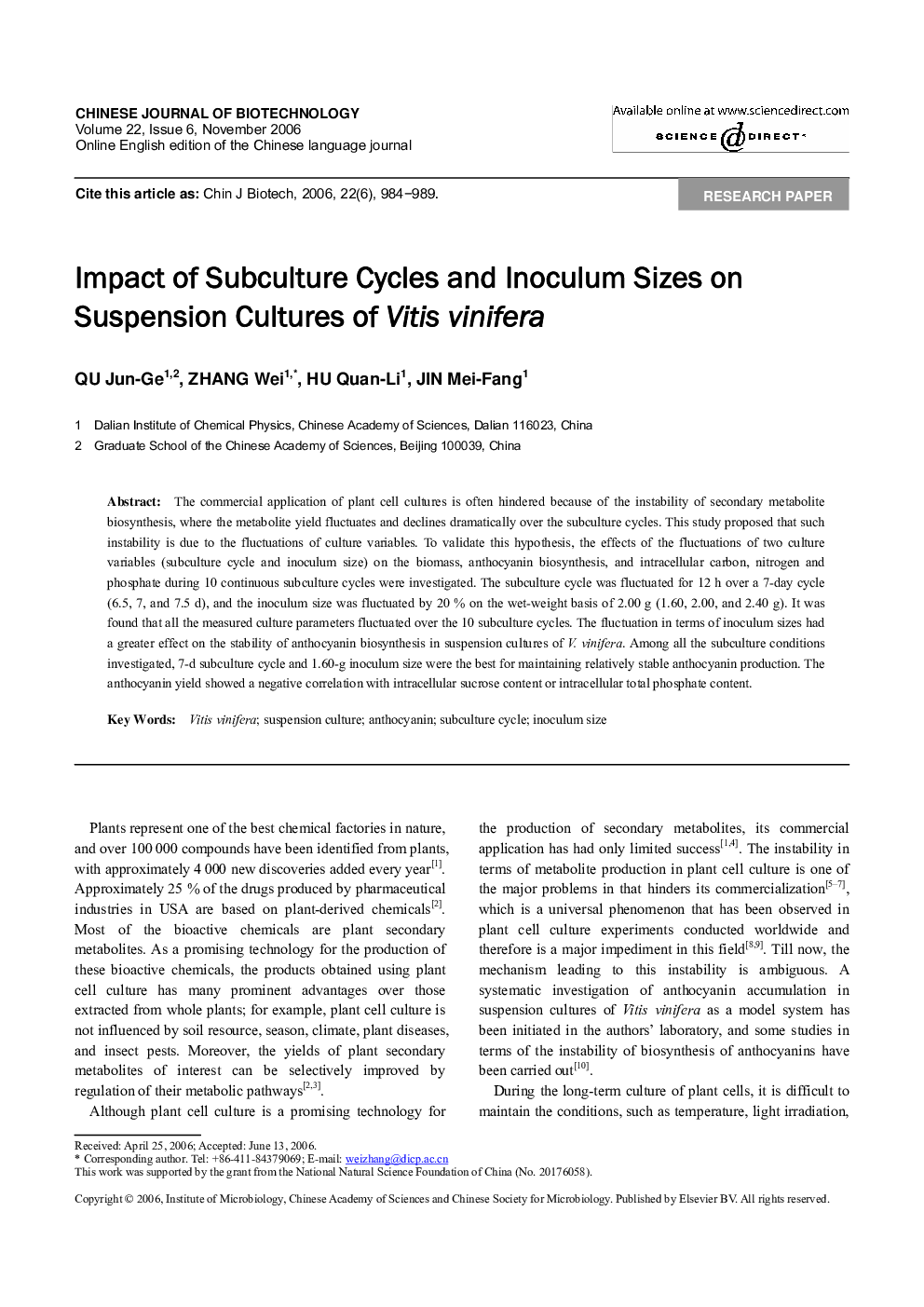| Article ID | Journal | Published Year | Pages | File Type |
|---|---|---|---|---|
| 2078945 | Chinese Journal of Biotechnology | 2006 | 6 Pages |
Abstract
The commercial application of plant cell cultures is often hindered because of the instability of secondary metabolite biosynthesis, where the metabolite yield fluctuates and declines dramatically over the subculture cycles. This study proposed that such instability is due to the fluctuations of culture variables. To validate this hypothesis, the effects of the fluctuations of two culture variables (subculture cycle and inoculum size) on the biomass, anthocyanin biosynthesis, and intracellular carbon, nitrogen and phosphate during 10 continuous subculture cycles were investigated. The subculture cycle was fluctuated for 12 h over a 7-day cycle (6.5, 7, and 7.5 d), and the inoculum size was fluctuated by 20 % on the wet-weight basis of 2.00 g (1.60, 2.00, and 2.40 g). It was found that all the measured culture parameters fluctuated over the 10 subculture cycles. The fluctuation in terms of inoculum sizes had a greater effect on the stability of anthocyanin biosynthesis in suspension cultures of V. vinifera. Among all the subculture conditions investigated, 7-d subculture cycle and 1.60-g inoculum size were the best for maintaining relatively stable anthocyanin production. The anthocyanin yield showed a negative correlation with intracellular sucrose content or intracellular total phosphate content.
Related Topics
Life Sciences
Biochemistry, Genetics and Molecular Biology
Biotechnology
Authors
QU Jun-Ge, ZHANG Wei, HU Quan-Li, JIN Mei-Fang,
